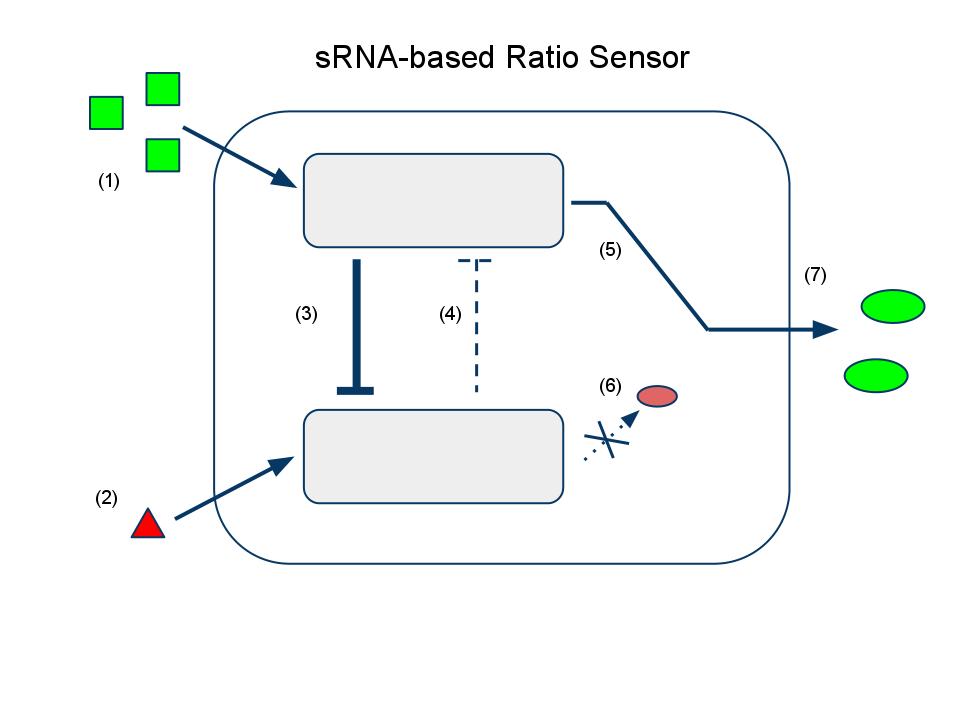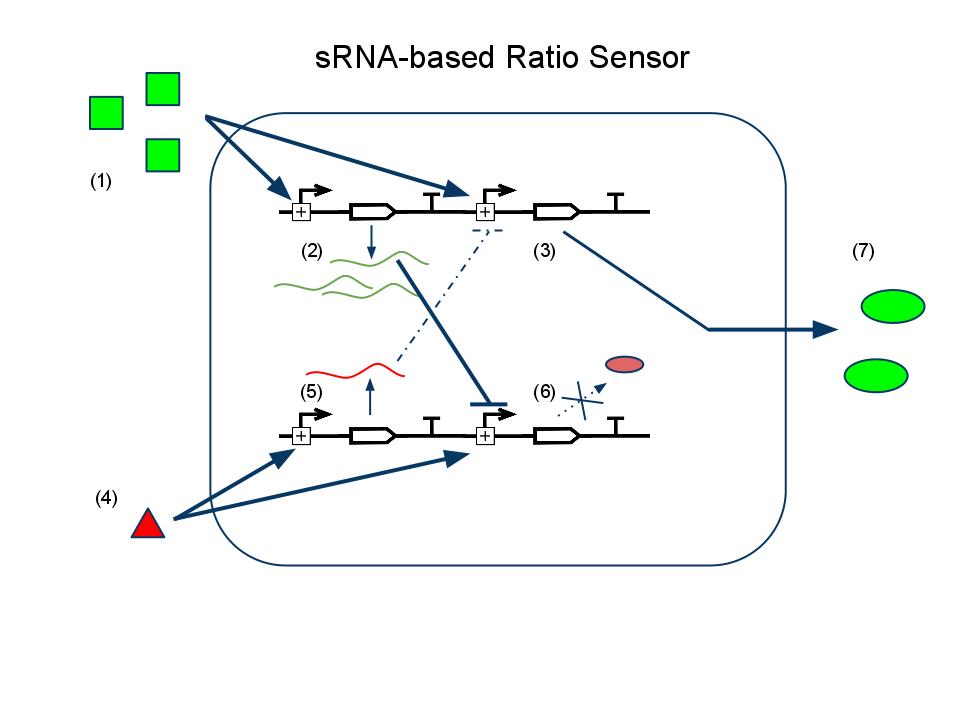Team:Stanford/Analog Sensor
From 2010.igem.org
(→The Kinase-Phosphotase Sensor) |
|||
| Line 2: | Line 2: | ||
<div class="contents"> | <div class="contents"> | ||
| - | =The Kinase-Phosphotase Sensor= | + | ==The Kinase-Phosphotase Sensor== |
| - | ==Overview== | + | ===Overview=== |
Our second sensor design responds to a '''range of ratios''', varying the '''intensity of the output''' to indicate the ratio of input chemicals. | Our second sensor design responds to a '''range of ratios''', varying the '''intensity of the output''' to indicate the ratio of input chemicals. | ||
uses a transcription factor regulated by a kinase/phosphotase pair. In this system, the phosphorylated form of the transcription factor causes transcription of a gene coding for our output protein. The production of the transcription factor is under the control of a constitutive promoter, which maintains a basal concentration. The kinase that acts on the transcription factor is under the control of a promoter positively regulated by A. A phosphotase is similarly controlled by input B. By testing the concentration of output protein in relation to various concentrations of input chemicals, we plan to create an algorithm that will allow us to work backwards from a given concentration of output protein to deduce the ratio of the original concentrations of input chemicals. | uses a transcription factor regulated by a kinase/phosphotase pair. In this system, the phosphorylated form of the transcription factor causes transcription of a gene coding for our output protein. The production of the transcription factor is under the control of a constitutive promoter, which maintains a basal concentration. The kinase that acts on the transcription factor is under the control of a promoter positively regulated by A. A phosphotase is similarly controlled by input B. By testing the concentration of output protein in relation to various concentrations of input chemicals, we plan to create an algorithm that will allow us to work backwards from a given concentration of output protein to deduce the ratio of the original concentrations of input chemicals. | ||
| + | |||
| + | ===Diagrams=== | ||
| + | |||
| + | [[Image:SRNAsensorlevel1.jpg | 600px | caption]] | ||
| + | [[Image:SRNAsensorlevel2.jpg | 600px | caption]] | ||
| + | |||
| + | |||
| + | </div> | ||
Revision as of 00:58, 27 October 2010

| Home | Project | Applications | Modeling | Parts | Team | Notebook |
The Kinase-Phosphotase Sensor
Overview
Our second sensor design responds to a range of ratios, varying the intensity of the output to indicate the ratio of input chemicals.
uses a transcription factor regulated by a kinase/phosphotase pair. In this system, the phosphorylated form of the transcription factor causes transcription of a gene coding for our output protein. The production of the transcription factor is under the control of a constitutive promoter, which maintains a basal concentration. The kinase that acts on the transcription factor is under the control of a promoter positively regulated by A. A phosphotase is similarly controlled by input B. By testing the concentration of output protein in relation to various concentrations of input chemicals, we plan to create an algorithm that will allow us to work backwards from a given concentration of output protein to deduce the ratio of the original concentrations of input chemicals.
Diagrams
 "
"

